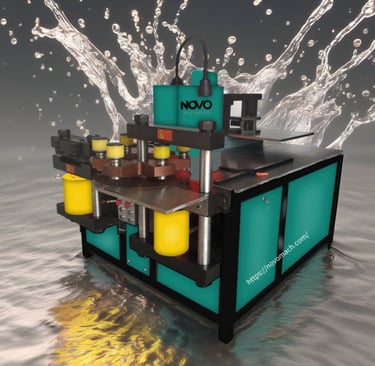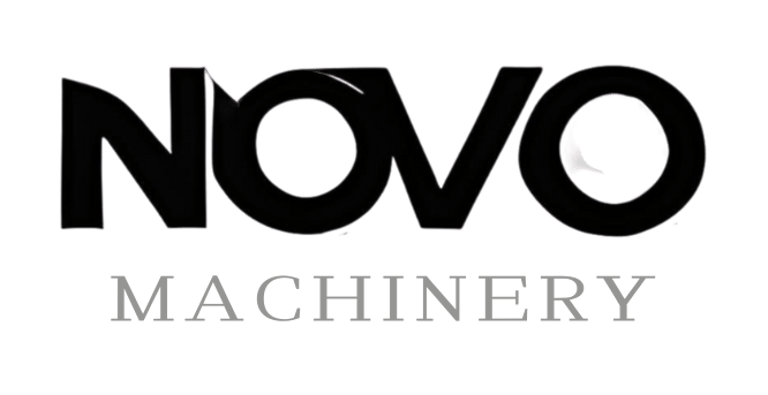Tropical Southeast Asia Climate Challenge: How Dialogue/Protective Bus Handlers Handle High Humidity and Prevent Corrosion
7/7/20255 min read


Understanding the Climate Challenges in Tropical Southeast Asia
Tropical Southeast Asia is characterized by a unique climate that poses significant challenges to various infrastructure, particularly transportation systems. The region is known for its high humidity, with levels often exceeding 80%, coupled with temperature fluctuations that can range from 25°C to 35°C throughout the year. Moreover, the seasonal monsoons lead to heavy rainfall, significantly impacting weather patterns and enhancing the climate's complexities. These formidable factors create an environment that accelerates wear and tear on transportation infrastructure, such as bus handlers.
High humidity levels are particularly detrimental to metal components found in bus handlers. When moisture in the air interacts with metal surfaces, it can lead to the formation of rust and corrosion over time. This corrosion not only affects the structural integrity of the bus handlers but also poses safety risks for public transportation users. Furthermore, the temperature fluctuations can induce stress on materials, leading to premature failure of components intended to withstand harsh conditions.
The challenge is compounded by the seasonal monsoon rains that saturate the environment, creating a cycle of wet and dry conditions that further exacerbate corrosion rates. Ingress of water into critical areas such as joints and connections can accelerate the deterioration of bus handlers, demanding implementation of effective protective measures. As such, addressing these climatic challenges becomes paramount to ensuring the functionality and safety of public transportation networks in Southeast Asia.
To mitigate the adverse effects brought about by the tropical climate, it is crucial for stakeholders, including manufacturers and transport operators, to adopt specialized materials and corrosion-resistant technologies. This proactive approach not only extends the lifespan of bus handlers but also guarantees reliable public transport services amidst the rigors of high humidity and seasonal shifts. Understanding these climate challenges is essential for developing solutions to protect vital infrastructure and enhance the safety and efficiency of transportation systems in the region.
The Role of Dialogue in Climate Adaptation Strategies
In the context of adapting to the challenges posed by high humidity and corrosion in Tropical Southeast Asia, dialogue among stakeholders emerges as a pivotal component. Transportation authorities, manufacturers, and maintenance teams must engage in continuous communication and collaboration to develop effective strategies that address the climate-related challenges faced by bus handlers.
Effective dialogue fosters a greater understanding of the multifaceted nature of humidity and its corrosive effects on transportation infrastructure. Stakeholders can share insights regarding the latest technological innovations, best practices, and maintenance techniques that have proven successful in mitigating these challenges. For example, regular workshops and training sessions can be organized, where maintenance teams and manufacturers explore innovative materials and coatings that resist moisture and corrosion. Such collaborative efforts can lead to the identification of tailor-made solutions that cater specifically to local climatic conditions.
Furthermore, the establishment of feedback loops is essential. Transportation authorities can gather data from maintenance teams regarding the durability of certain materials or components under high humidity conditions. This information can then be relayed back to manufacturers, who can refine their products accordingly. A prominent case study illustrating this dynamic is the partnership between urban bus operators and corrosion-resistant component manufacturers. Their ongoing dialogue has resulted in new products that significantly reduce maintenance costs and enhance the lifespan of bus handlers in humid environments.
Through active collaboration and an open exchange of ideas, stakeholders can not only address current issues related to humidity and corrosion but also anticipate potential future challenges. The dialogue can cultivate a culture of innovation, encouraging stakeholders to experiment with emerging technologies and to rethink traditional practices. By leveraging collective expertise, the transportation sector in Tropical Southeast Asia can pave the way toward more resilient and sustainable operations.
Protective Measures for Bus Handlers Against Corrosion
Corrosion poses a significant challenge for bus handlers operating in the humid climate of Tropical Southeast Asia. To mitigate the adverse effects of moisture, transportation agencies are increasingly adopting a variety of protective measures. One of the most effective approaches involves applying advanced coatings specifically designed to form a barrier between metal surfaces and the corrosive environment. These coatings can range from epoxy-based formulations to thermoplastic polymers, providing robust protection tailored to withstand elevated humidity levels.
In addition to specialized coatings, utilizing corrosion-resistant materials in the construction of bus handlers plays a critical role in prolonging their lifespan. Stainless steel and aluminum alloys are popular choices due to their innate resistance to rust and degradation. These materials are particularly beneficial in bus transit systems where exposure to moisture is inevitable. By incorporating such materials, agencies can significantly reduce maintenance frequencies and extend the operational life of their fleets.
Moreover, regular maintenance practices cannot be overlooked. Systematic inspections and timely maintenance are essential to identify potential corrosion issues before they escalate. A proactive maintenance schedule should include checking for signs of initial corrosion, such as discoloration or pitting, and addressing them promptly. Effective cleaning techniques that remove moisture and contaminants are also vital. Use of water-free solvents or air-drying methods can aid in preventing the accumulation of corrosive substances.
Monitoring corrosion conditions is equally crucial. Implementing technologies such as humidity sensors, corrosion monitoring systems, and condition assessment tools allows transportation agencies to assess the effectiveness of their protective measures and make informed decisions. By continually evaluating the status of bus handlers in humid environments, agencies can adopt best practices tailored to their specific circumstances, leading to enhanced operational efficiency and reduced repair costs.
Future Outlook: Innovations and Sustainable Practices for the Transportation Industry
As Southeast Asia continues to grapple with climate challenges, particularly the high humidity that fosters corrosion and operational inefficiencies, the transportation industry stands at the crossroads of transformation. Innovations aimed at enhancing climate resilience are pivotal. This encompasses the adoption of advanced materials and technology that can withstand the rigors of extreme humidity, thereby prolonging the lifespan of transport infrastructure and vehicles. For instance, research into corrosion-resistant alloys and protective coatings is gaining traction, promising to mitigate the deterioration typically accelerated by humidity.
Additionally, the integration of smart technologies within the transportation sector is poised to revolutionize operational efficiency. IoT devices can provide real-time monitoring of equipment and infrastructure, allowing for timely maintenance that preemptively addresses the impacts of humidity-induced wear. This proactive approach not only extends asset lifecycles but also reduces operational costs, aligning with broader sustainability goals.
Moreover, the shift towards electric vehicles (EVs) is an essential component of sustainable practices. As Southeast Asian nations invest in electrification of their public transit systems, they foster a reduction in greenhouse gas emissions, therefore enhancing air quality and public health. Policies supporting the adoption of EVs, such as incentives for manufacturers and consumers alike, could accelerate this transition. Such initiatives also encourage the establishment of charging infrastructure, further embedding sustainability into the transport framework.
Finally, stakeholder engagement and collaboration play a critical role in shaping the future of transportation in the region. Partnerships between government, industry leaders, and research institutions can propel forward-thinking policy frameworks that prioritize climate adaptability. By harnessing collective insights and resources, Southeast Asia can create a robust transportation ecosystem that not only meets current demands but is also resilient against future climatic uncertainties.
Innovate
Leading manufacturer of busbar processing equipment solutions.
Contact
Support
+131 2713 4627
© 2025. All rights reserved.
